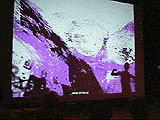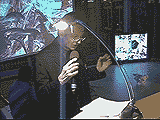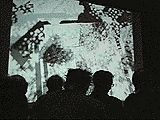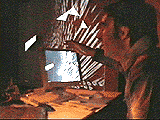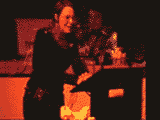|
3 |
|
work timeline |
|
The methodological framework of orientation for the nybble engine project is a radical/re-constructivist meta-art. "Meta-art" (cf. Art & Language 1972) is an evolutionary achievement of the art system, and its emergence is inseparably linked with aesthetic Modernism. In its final evolutionary stage, meta-art is a reflection-theoretical endeavor as a form for observations, in order to observe oneself as a second-order observer. This kind of art marks the end of the aesthetic era of the self-description of the art system. In order for the communication of the form to succeed, however, the socially constituted expectations of art must be taken into consideration in terms of the aspect of viability (following Ernst von Glasersfeld). This means that a reflection-theoretical art that claims to preserve complexity must still articulate itself in forms that are still identifiable as art. In this way, meta-art processes along the system/environment difference, at the very edge, so to speak, within which the intensification of art's ability to dissolve and recombine can still reproduce art. It is not the aim of meta-art to explore existence in any form for the purpose of attaining insights with artistic means and methods, but rather to discursivize questions that relate to the how and the viability of art in its respectively current social context. Of course, not every developmental step proves to be viable. "A sociology that regards modern society as a functionally differentiated social system, does not maintain that all functions succeed equally well when functionally differentiated. It has doubts with regards to religion, and with regard to art it can raise the question, whether differentiation is beneficial to this functional area..." (Luhmann 1984). The current approaches of "meta-art" only have little in common now with those of the sixties (cf. Art & Language 1972). The forms of current meta-art are now completely integrated in the post-autonomous art that has been developing for about twenty years. Just as the orientation to function serves both self-simplification and evolving complexity, the autonomy of art can be both weakened and strengthened through heteronomy. From the perspective of differentiation theory, the issue of autonomy and heteronomy is never an either/or question. Rather, both of these terms are conceived as a relationship of mutual escalation, whereby differentiated systems combine an increase of autonomy with a greater amount of dependency on a plurality of other systems. The tendency of art in the last twenty years sufficiently affirms that pure, non-purposeful art no longer offers a motivational basis for aesthetic agency. An idea of this kind is no longer tenable in the plurality of an (ultra-) modern society. In contemporary art, therefore, it is much more a matter of initiating communicative fields of production via articulations. Under the "frame phenomenon" art, these fields create various horizons of meaning for as many participants as possible. From this perspective, it is understandable that the nybble engine projects integrates elements borrowed from the dramaturgy of marketing and accordingly has three pillars: 1. the "theme phenomenon", calling to mind "narratives" from science, for instance; 2. the "frame phenomenon", which is clearly given here through the art reference; and 3. the "ensemble phenomenon", which provides for the participants to retain ensemble status beyond mere reception. |
ncc48 netart comm. congr. 01 transmediale 02, Berlin casino luxembourg, 02 |
|
|
|
>>> more stuff |
>>> Literature |

